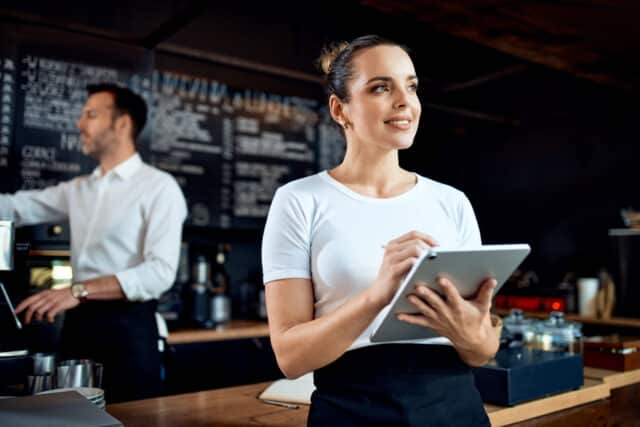
Economic uncertainty has forced companies to cut back on labor costs. How can employers do this without sacrificing much-needed workers?
In previous eras, the economic uncertainty we see today would be paired with a surge in unemployment – putting employers in a strong position to reduce their labor costs. But today’s environment is different. Indeed data shows that labor markets remain historically tight, with just 1.1 unemployed person per vacancy. Rather than simply cutting costs, organizations need to simultaneously keep labor costs under control and appeal to candidates and employees who demand more – and have more power. Here are 7 ways they can do just that:
1. Rethink benefits
Benefits help workers and make them feel valued – just as an increase in compensation would. The major advantage of benefits, however, is that they’re more flexible. Most companies can offer benefits that have a similar impact to pay without incurring the same financial strain.
Flex’s research found that more organizations are offering flexible working hours (25.3%) and well-being or mental health benefits (19%) than are increasing wages (17.3%). These companies understand that improving the employee experience and making their workers feel cared for is just as effective as throwing money at the problem.
2. Focus on workplace culture
The cost of hiring a new employee can be eye-watering, not to mention the amount of time and effort involved. Increasing retention is an undervalued means of keeping staffing costs down – and that is why workplace culture is so important. Investing in culture – whether through increased flexibility for workers or in-office amenities – can have an enormous positive impact on productivity, well-being, and retention. The cost of these adjustments will be more than covered by your subsequent savings on hiring.
3. Targeted recruitment
However strong your culture is, some recruitment is inevitable. This is why forward-thinking companies focus on more targeted, efficient recruitment campaigns that both increase the likelihood of a good fit and decrease the time and money spent finding candidates. From geographical location to the language in your job ads, a more strategic approach to recruitment quickly pays dividends. But to really see results, companies should introduce as much data and analytics as possible – to ensure they zero in on the most efficient opportunities possible.
4. New labor markets
Many companies incur excess costs because their approach to talent is too narrow. Whether it’s increased accessibility for disabled people or appealing to under-utilized groups like students and older workers, broadening your pool of potential candidates is a great way to save on labor costs and increase diversity in your organization. This might appear at odds with targeted recruitment, but the two actually go hand-in-hand. Appealing to these under-utilized groups requires a level of targeting because many individuals rule themselves out. So tailored job ads that explicitly engage with these groups help ensure they know you are interested in them.
5. Streamline hiring processes
Much of the cost of recruitment is caused by inefficiencies in the hiring process. From multiple interviews to a drawn-out vetting process, many companies mistake inefficiency for caution. But simplifying this process will not only reduce costs – it can actually improve the quality of candidates. Many strong candidates simply drop out of the process because it is too long. It also reduces companies’ capacity to respond to changes in the market quickly. Removing these inefficiencies and introducing technology to speed things up can have a dramatic impact on costs, candidate experience, and your company’s operational agility.
6. Utilize demand management
The average UK business is either 30% over-staffed or 16% understaffed at any point in time. The cost of this can’t be overstated. Not only does it incur unnecessary staffing costs, it also reduces employee morale and weakens productivity.
Using historical staffing data, demand data and analytics, companies can massively reduce these inefficiencies – and ensure they have the right number of staff for every shift. While perfect staffing volume is unrealistic, even a small increase would dramatically improve your labor costs.
7. Temporary Staffing
Temporary staffing is often seen as more expensive than hiring full-time employees, but this just isn’t the case. With the increasing supply of temporary labor and more efficient 3rd party partners to provide access to talent, temporary staffing has become an essential way to keep labor costs under control, increase flexibility and enable strategic maneuvers. Our research found that 55% of companies see temporary staffing as a way to reduce costs during hiring freezes – and 58% plan to use the same or more temporary staffing in 2023.
Forward-thinking companies go further than simply using temporary staffing: they rebuild their workforce strategy around it. This ‘blended workforce’ is not only viable for the current economic environment – it is an indispensable way of future-proofing your workforce.
Book a demo to learn how Indeed Flex can improve your staffing.








